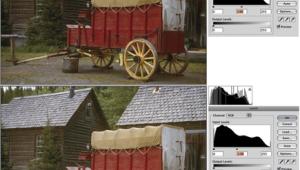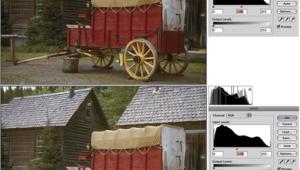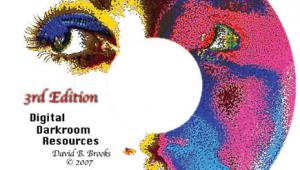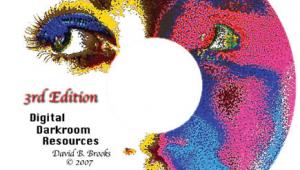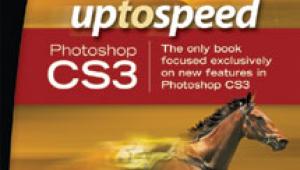Digital Slide Shows; A Road Map For Success Page 2
Profiling Your Projector
Even after having done all of the earlier steps, your digital slides may still
appear to be off tonally and/or exhibit a color cast. Arguably the most accurate,
but expensive solution is to calibrate your projector with special software
such as GretagMacbeth's Eye-One Beamer (www.gretagmacbeth.com). You would
need to recalibrate with the Eye-One Beamer for each surface you project to
in order to have an accurate profile for each situation. However, unless you
are doing frequent slide shows on a professional level, you will probably prefer
a more affordable solution. But those who run AV departments in schools, etc.,
should take note.
Practical Solutions For Color And Tonality Mismatches
One of the most practical solutions is to hook up your projector ahead of time
and spend some time adjusting the projector settings so that the projected image
visually matches your monitor as closely as possible. If possible, match the
lighting in the room you will be giving your show and project to a similar surface.
Some public places require a certain amount of light be left on in the room
and this can affect the perceived brightness of projected images. Projecting
to a wall painted a light tan will give different results than a bright white
wall, which will differ from a screen.
The ability to adjust brightness and contrast, as well as the red, green, and
blue channels on the projector, can make a world of difference in how your images
look. Ideally you should project a color target--an image that contains
a variety of colors and shades from white to black. (You can download a PDI
target from www.timgrey.com/ccdownloads.htm
or www.gballard.net/psd/srgbforwww.html.)
Many projectors offer enough options so that after spending time adjusting the
settings you will be quite happy with the projected results. When selecting
a projector, the ability to adjust the colors, brightness, and contrast of the
projected image should be one of the major factors you consider. Adjusting the
projector for accurate display is the easiest and most practical solution for
most people (#5).
 |
|
|
Unfortunately, other projectors don't allow you to make adequate adjustments. In that case you will need to spend some time modifying your re-sized images. Ideally you would also use a color target as mentioned earlier (#6).
 |
|
|
Open the target image in Photoshop. Connect your projector to your computer
so that you can view the projected version of what is on your monitor while
you are able to view your monitor at the same time. Again, you will need to
project to a similar surface as what you will use in your show, and use similar
lighting conditions.
Next, create another copy of the color target image by going to Image>Duplicate.
You will now have two copies of the target visible on your monitor. Arrange
them side by side. Next you will need to make tonal and color adjustments to
one of the copies. Make these adjustments to the image on the right-hand side
of your monitor (by clicking on it to make it active) so that the right-hand
projected image matches the left-hand image on your monitor as closely as possible.
Note that the two targets will no longer appear identical.
Frequently, these modifications include (but are not limited to) setting the
output slider in Levels to 244 or slightly less to reduce the apparent brightness
of the whites, slightly reducing the overall brightness of the image in Levels
or Curves, and adjusting the color by modifying the sliders in the Color Balance
adjustment, and/or modifying the color saturation. You can record these steps
to create an action and then batch process all the images in your slide show.
The resulting images may not look ideal on your monitor, but they will look
much better when projected (#7).
 |
|
|
Other Considerations
There are numerous slide show programs available today which make it easy to
import and order your slides. I use Keynote (www.apple.com)
or PowerPoint (www.microsoft.com)
since I am a Mac person. Many Windows users like SmoothShow (www.smoothshow.com),
ProShow Gold (www.photodex.com),
or PicturesToExe (www.wnsoft.com).
Some offer better transitions than others. A common mistake that photographers
sometimes make when first creating digital slide shows is using fancy transitions.
You want your audience to pay attention to your images and not the transitions,
so keep the transitions simple, unobtrusive, and consistent.
Some of the slide show programs allow you to add music to your show. Choose
music that helps focus attention on your pictures rather than on the music itself.
Be certain to use royalty-free music, or buy the rights to use a particular
song if you prefer and adhere to the terms of use. It's no more acceptable
for a photographer to use someone's music illegally than it is for a musician
to use a photograph without paying for it. There is a huge library of royalty-free
songs available on the Internet, many of which are free for a private, non-income
generating use.
Have fun, create a great slide show, and enjoy your audience's reactions
to your images!
Ellen Anon, co-author of "Photoshop for Nature Photographers: A Workshop
in a Book," Sybex 2005, is a free-lance photographer and Photoshop instructor.
For more information about photography tours and Photoshop workshops, see her
website, www.sunbearphoto.com.
For more information about selecting digital projectors, slide show programs,
and using music with your slide shows, see Photo Finish: The Digital Photographer's
Guide to Printing, Showing, and Selling Images by Jon Canfield and Tim Grey
(Sybex, 2004).
- Log in or register to post comments

